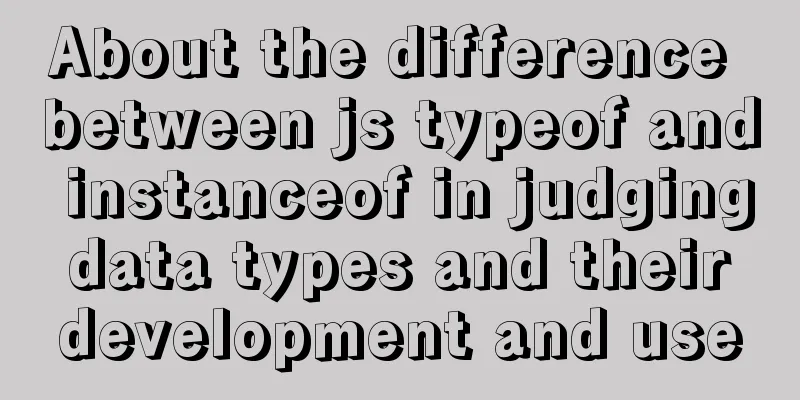Examples of optimistic locking and pessimistic locking in MySQL

|
The task of concurrency control in a database management system is to ensure that multiple transactions accessing the same data in the database at the same time do not destroy the isolation and unity of the transactions and the unity of the database. The main technical means used by optimistic locking and pessimistic locking concurrency control Pessimistic Lock In relational database management systems, pessimistic concurrency control (PCC) is a method of concurrency control. It prevents a transaction from modifying data in a way that affects other users. If a transaction applies a lock to each row of data in an operation, other transactions can only perform operations that conflict with the lock when the transaction lock is released. Pessimistic concurrency control is mainly used in environments with intense data contention and where the cost of using locks to protect data when a concurrency conflict occurs is lower than the cost of rolling back the transaction. Pessimistic locking refers to a conservative (pessimistic) attitude towards data being modified by the outside world (including other current transactions in the system and transaction processing from external systems). Therefore, the data is locked during the entire summer processing process. The implementation of pessimistic locking generally relies on the locking mechanism provided by the database (recommended tutorial: MySQL tutorial) In the database, the pessimistic locking process is as follows
Using pessimistic locking in MySQL InnoDB To use pessimistic locking, you must turn off the autocommit property of the MySQL database, because MySQL uses the autocommit mode by default, which means that when you perform an update operation, MySQL will immediately commit the result. //Start transaction begin;/begin work;/start transaction; (choose one of the three) select status from t_goods where id=1 for update; //Generate an order based on product information insert into t_orders (id,goods_id) values (null,1); //Change the product status to 2 update t_goods set status=2; //Commit transaction commit;/commit work; In the above query statement, the select...for update method is used, and pessimistic locking is implemented by opening an exclusive lock. The corresponding record is locked, and other transactions must wait until this transaction is committed before they can be executed. We use select ... for update to lock the data, but we need to pay attention to the lock level. MySQL InnoDB uses row-level locks by default. Row-level locks are all based on indexes. If a SQL statement does not use an index, a row-level lock will not be used, and a table-level lock will be used to lock the entire table. Features Provides a guarantee for the security of data processing In terms of efficiency, the locking mechanism will cause additional overhead to the database, increasing the chance of deadlock. In read-only transactions, since there is no conflict, there is no need to use locks, which will increase system load and reduce parallelism. Optimistic Locking Optimistic concurrency control is also a concurrency control method. Assume that multiple concurrent transactions will not affect each other during processing, and each transaction can process the part of the data affected by it without generating locks. Before submitting data updates, each transaction will first check whether other transactions have modified the data after the transaction reads the data. If so, the transaction being submitted will be rolled back. Optimistic locking is different from pessimistic locking. It assumes that data will not conflict. Therefore, when data is submitted and updated, it will formally check whether the data conflicts. If a conflict is found, an error message will be returned to the user, allowing the user to decide what to do. Optimistic locking generally uses a record version number to add a version identifier to the data, and updates the version identifier when the data is updated. accomplish When using version numbers, you can specify a version number when initializing the data, and each update operation on the data will perform a +1 operation on the version number. And determine whether the current version number is the latest version number of the data
Features Optimistic concurrency control believes that the probability of data contention between transactions is small, so it tries to proceed as directly as possible and does not lock until the transaction is committed, so no locks or deadlocks will occur. You may also be interested in:
|
<<: Example method to find keywords and their preceding and following information in Linux logs
>>: Detailed Analysis of Event Bubbling Mechanism in JavaScript
Recommend
Detailed explanation of non-parent-child component communication in Vue3
Table of contents First method App.vue Home.vue H...
MySQL 8.0.14 installation and configuration method graphic tutorial
This article records the installation and configu...
Solutions to MySql crash and service failure to start
I have been in contact with PHP for so long, but ...
Example code for using text-align and margin: 0 auto to center in CSS
Use text-align, margin: 0 auto to center in CSS W...
How does Vue implement communication between components?
Table of contents 1. Communication between father...
Pure CSS to achieve click to expand and read the full text function
Note When developing an article display list inte...
Take you to understand MySQL character set settings in 5 minutes
Table of contents 1. Content Overview 2. Concepts...
How to install MySQL for beginners (proven effective)
1. Software Download MySQL download and installat...
Linux file and user management practice
1. Display the files or directories in the /etc d...
MySQL 8.0.17 installation and configuration method graphic tutorial
This article shares the installation and configur...
Box-shadow and drop-shadow to achieve irregular projection example code
When we want to add a shadow to a rectangle or ot...
How to prevent hyperlink redirection using JavaScript (multiple ways of writing)
Through JavaScript, we can prevent hyperlinks fro...
Thinking about grid design of web pages
<br />Original address: http://andymao.com/a...
JavaScript design pattern chain of responsibility pattern
Table of contents Overview Code Implementation Pa...
CSS form validation function implementation code
Rendering principle In the form element, there is...









